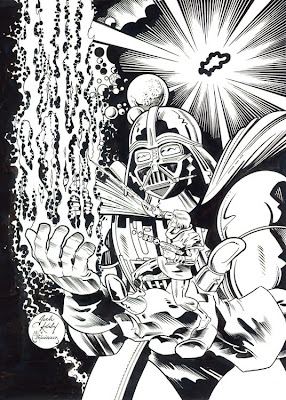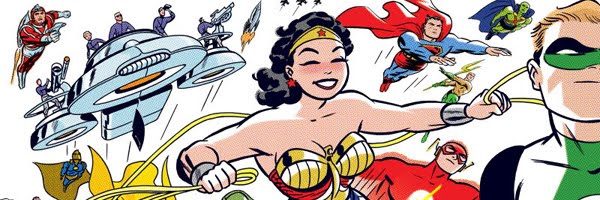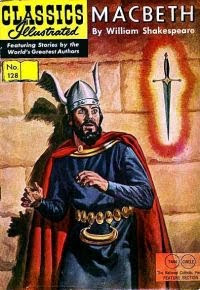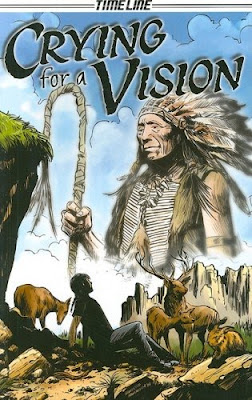
HAPPY BIRTHDAY LEGO! Oops sorry we mean...HAPPY BIRTHDAY LEGO STAR WARS!
This year Lego Star Wars celebrates its 12th anniversary, and to kick off this special event Space Dock is looking back at more than decade of fun from a brick galaxy “far, far away”. In this article we will be giving you our choices for the five best Lego Star Wars playsets based on fan requests from you. In a perfect world we’d like to give all the Lego Star Wars sets top billing, but had to cut it short and make our choices based on playability, creativity, and detail.
Drum roll please...
#5) Return of The Jedi- Jabba’s Sail Barge

Wouldn’t it be cool if you could recreate the scene from
Return of the Jedi with Luke being fed to the Sarlac monster? Well dream no more
Star Wars fans because Lego has you covered.
This handsome 2004 set features a very detailed replica of Jabba’s Sail Barge, complete with many hidden compartments for hours of fun. As a bonus Lego has thrown in a Tatooine skiff and a very menacing looking Lego Sarlac pit monster. The best part about the set is all the mini figures that come with it: Luke, Han, R2-D2, Jabba The Hutt, Princess Leia, Bobba Fett, Lando Calrissian, and Jabba Palace Guard.
Space Dock thinks that Lego went all out on this playset. The exquisite detail on the Sail Barge makes this set a great thing to play or display. The set is quite large but super sturdy when built correctly.
#4) The Empire Strikes Back-Hoth Rebel Base.

“Echo Base, we have Imperial Walkers approaching!”
Any
Star Wars fan from the smallest child to the oldest adult remembers the epic snow battle from
The Empire Strikes Back. Back when the movie came out many kids wished that they could recreate the scene with their own Hoth Rebel fortress. Well fans, now you can! Our #4 pick is Lego’s 2007 Hoth Base, and boy is it cool! Perhaps you’ll agree with us when we quote Darth Vader by saying, “impressive…most impressive”.
This snowy set features opening blast doors, a Rebel snow speeder vehicle, work crane for repairs, and a blast turret for those pesky Imperial troops. In addition, a very generous amount of mini figures in this set: Luke Skywalker, Rebel Pilot, two Rebel Snow Troopers, K3PO, and two Imperial Soldiers.
What sets the Hoth model apart from other sets is the level of detail and thought that went into it. The Rebel base looks very close to the one in the movie, as does the snow speeder. The mini figures and gun turret give you hours of play possibilities. Surely, the Lego Hoth Base deserves a proud place on our list.
#3) Return of the Jedi- Mon Calamari Cruiser.

“Rebels, it’s a trap!”... ha,ha just kidding, this 2008 Lego set is the furthest thing from. Rather, the replica of Admiral Ackbar’s Mon Calamari cruiser will have you salivating at the mouth.
The action packed Lego set features a Rebel control room, command center, and repair hangar with bonus A-Wing fighter included. Recreate the famous Battle of Endor with mini figures including Lando Calrissian, Mon Mothma, Rebel Pilot, Rebel General, and Mon Calamari warrior.
The set features so much detail it‘s hard to keep track. This includes a swivel chair, holograph projection room, and working crane. It looks very handsome on a shelf or in a child’s play room.
#2) Star Wars: A New Hope-Jawa Sand Crawler.

Remember when those pesky Jawas sold R2 and C-3PO to Luke Skywalker...Space Dock certainly does! The spirit of that famous scene comes alive in this 2007 Lego Star Wars playset. This model is so cool it almost makes us want to go into the robot selling business ourselves!
The Sand Crawler model features rolling treads, secret compartments for droids and a gang plank that really opens. Plus, the best part, the Sand Crawler opens up to showcase many levels for hours of fun. In this set you get Luke, Uncle Owen, three Jawas, R2 and 3PO, and three other cool looking droids. To add to the fun, a special pulley is included to raise and lower R2-D2. Now is that cool or what?
The Sand Crawler looks identical to the one from the movie and features a great amount of playability. We hope you don’t lose too much track of time playing with this gem.
#1) Star Wars: A New Hope-Death Star Playset.

“Now you will witness the power of this fully armed and operational battle station”
In all the galaxy, nothing is more feared than the Empire’s dreaded super weapon... The Death Star. We must admit we waited a long time for Lego to get around to making model of the original Death Star, and it is true good things come to those who wait.
This 2009 set is off the charts with features: trash compactor, movable laser turret, prison cell, tractor-beam station, conference room, gun stations, and many more areas. The Death Star has bonus Imperial TIE Fighter and includes TWENTY-FIVE MINI FIGURES! We at Space Dock cannot stress enough that this is an enormous set and not cheap with price tag that can go up to six hundred dollars. Well certainly not the most affordable set in the world, if you want quality, this Lego gem cannot be beat.
The level of effort put into this set by the folks at Lego sets it light-years ahead of anything in previous years. An entire film waiting to be recreated right in your home. We hope you enjoy it and "may the Force be with you".



















